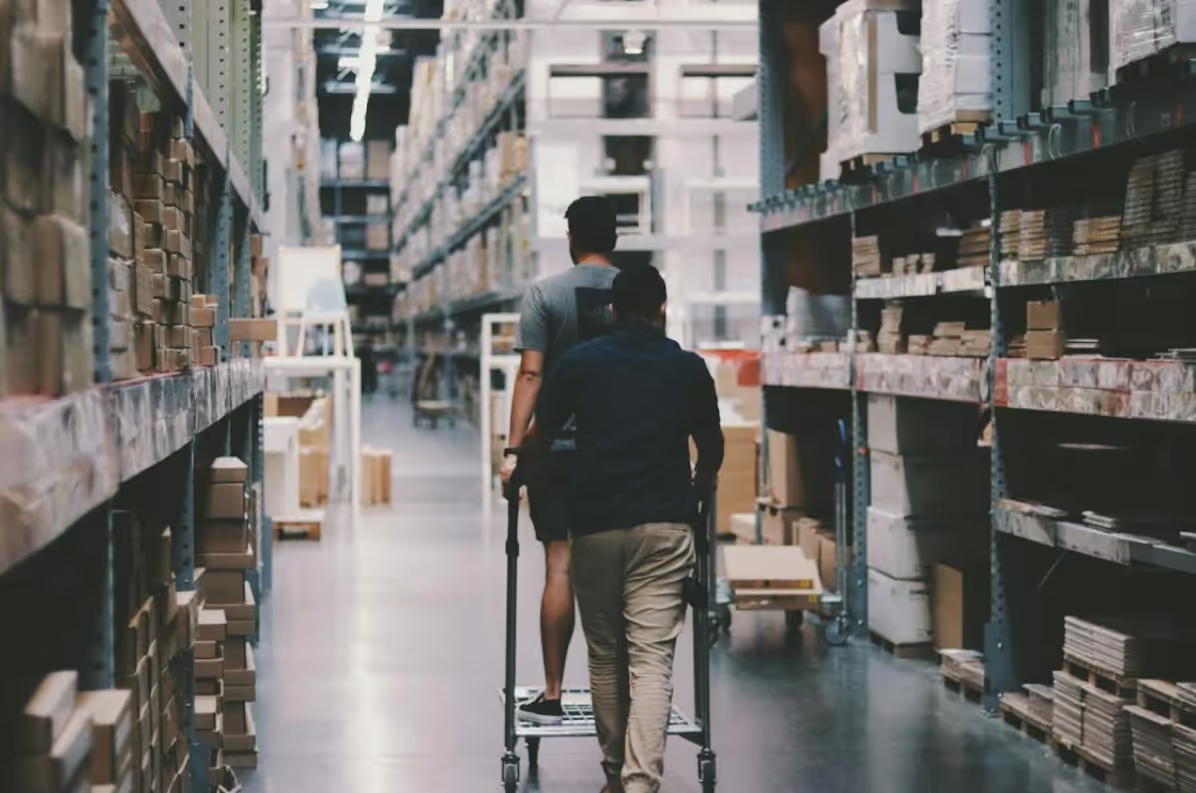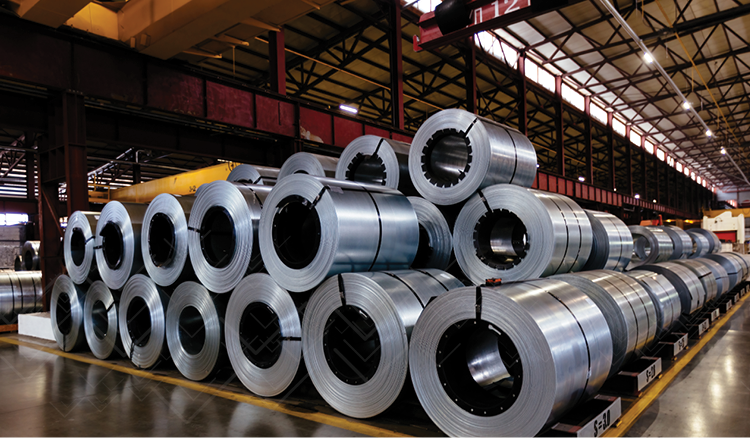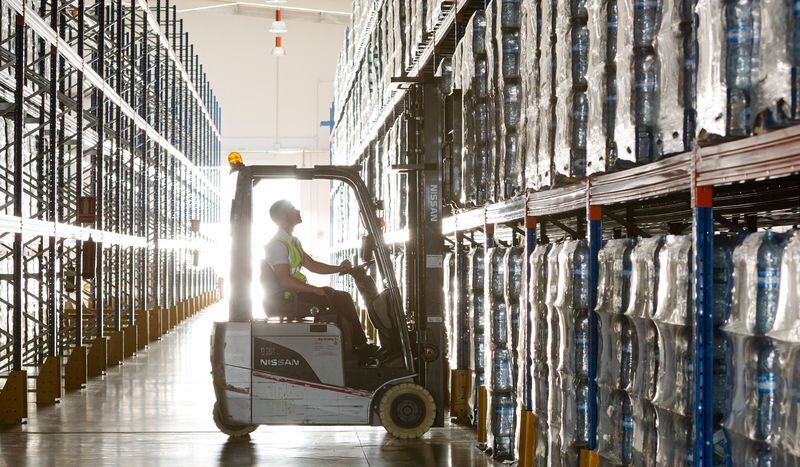Section 232 Tariffs: What They Are, Implications for Manufacturers & Distributors, & How Veryable Can Help
In this article, we’ll discuss the restoration of the Section 232 Tariffs, the implications for the U.S. manufacturing sector, and how Veryable can help businesses navigate & capitalize on these changes.
If you’re looking for information on other tariffs, check out these articles:
Background
The original 2018 Section 232 tariffs on steel (25%) and aluminum (10%) were implemented under the first Trump Administration to address national security concerns related to global overcapacity, particularly the subsidized steel production in China. Section 232 of the Trade Expansion Act of 1962 allows the president to impose import restrictions based on an investigation and affirmative determination by the U.S. Department of Commerce that certain imports threaten to impair U.S. national security. The Section 232 investigations found that excessive imports had weakened the domestic steel and aluminum industries, reducing their ability to meet national defense and critical infrastructure needs. Additionally, the Commerce Department determined that global overcapacity, driven by foreign government subsidies and unfair trade practices, had led to declining production, plant closures and job losses in the U.S. industry.
More recently on February 10th, the Trump Administration issued a series of proclamation imposing duties on imports of steel and aluminum products. The first proclamation, “Adjusting Imports of Steel Into the United States”, was issued on February 10, 2025, and the second, “Adjusting Imports of Aluminum Into the United States”, was released on February 11, 2025.
Set to take effect on March 12, 2025, these proclamations will:
- Terminate Section 232 duty tariff relief and flexibilities for covered steel and aluminum products from Argentina, Australia, Brazil, Canada, European Union countries, Japan, Mexico, South Korea, Ukraine and the UK.
- Impose 25% ad valorem duties on steel and steel derivative articles from all countries.
- Impose 25% ad valorem duties on aluminum and aluminum derivative articles from all countries except Russia (whose aluminum is prohibited from entering the U.S..
- Terminate the Section 232 product exclusion process such that no new exclusions can be requested, but maintain existing exclusions until their expiration date
- Eliminate the use of drawback duty claims for goods covered by the Proclamations.
- Instruct the Department of Commerce to establish, within 90 days of the Proclamations, a process for covering additional derivative steel articles.
- Instruct U.S. Customs and Border Protection (CBP) to prioritize reviews of the classification of imported steel articles and derivative steel articles, as well as imported aluminum articles and derivative aluminum articles, and to assess monetary penalties in the maximum amount permitted by law without consideration of any mitigating factors, if it finds that misclassification resulting in nonpayment of duties has occurred.
Additionally, after the issuance of the steel and aluminum proclamations, a White House official confirmed these tariffs would “stack” on any other tariffs. For example, if the currently suspended 25% increase in tariffs for Canada and Mexico are implemented, imports of Canadian and Mexican aluminum and steel would face new 50% tariffs.
While the full impact of these tariffs will take time to work through the market, they will have far-reaching implications, not only for American manufacturers that rely on imported steel and aluminum, but also for global trade relations. As the world’s largest importer of steel and aluminum, in 2024 the United States imported $17.7 billion in aluminum products and $31.7 billion in steel products that fall under Section 232 tariffs. However, it’s important to keep in mind that the actual value of imported steel and aluminum subject to tariffs has been substantially lower due to country-specific exemptions. Factoring this in, the United States only had tariffs on about 31% of imported aluminum and 21% of steel imports. Eliminating these exemptions would raise the import values subject to tariffs by 373% for steel and 220% for aluminum.
So far, Mexico, Canada and the European Union have condemned these tariffs, while Japan, Australia, and Brazil have stated they are seeking exemptions.
In Australia’s case, Trump has stated that he’s considering an exemption from his aluminum and steel tariffs in light of the country’s trade surplus with the US. In the EU’s case, they’ll prioritize negotiations over retaliatory countermeasures for now in an effort to avoid a damaging trade war, but if this is unsuccessful, EU leaders may consider reinstating the countermeasures imposed in 2018. In Mexico’s case, Economy Minister Marcelo Ebrard is set to meet with US officials on Thursday February 20th to discuss the steel and aluminum tariffs.
For Brazil, they are also seeking an exemption due the fact that the US has maintained a considerable trade surplus with them over the past few years, and because the U.S. has historically lacked sufficient domestic supply to meet demand for semi-finished slabs. For context, the U.S. imported 5.6 million tons of semi-finished slabs in 2024.
Implications For Domestic Manufacturers & Companies Dependent on Foreign Materials
These tariffs will drive up production costs for manufacturers dependent on foreign sourced materials, and if they are unable to quickly pivot and identify alternative suppliers in domestic or non-tariffed markets, this will force them to choose between absorbing the excess costs or passing them to consumers, both of which will negatively impact price competitiveness.
To navigate these changes while maintaining cost-competitiveness and compliance with these new tariffs, companies dependent on foreign-sourced materials should consider reshoring or near-shoring strategies.
But it’s not just the companies dependent on foreign-sourced materials that need to quickly pivot. When these tariffs go into effect on March 12th, domestic steel & aluminum producers will see a huge uptick in demand and will need to drastically increase production capacity, otherwise, downstream companies will have to continue importing from tariffed markets and will be forced to pass the costs along to consumers to stay profitable.
The challenge is, hiring additional FTEs is slow, inefficient, and expensive. Not to mention that labor supply is contracting due to immigration policy changes. A domestic steel producer who expects business to boom when these tariffs hit will need to start scaling up now to ensure they have the capacity to meet higher demands. The problem is, it’s hard to estimate how much of an increase in business you’ll actually see. If you overestimate, you’ll be left with a bloated payroll and difficult decisions to make, and if you underestimate, you’ll be ill-equipped to fully capitalize on new opportunities and will lose them to your competitors.
Small and medium sized manufacturers especially, which make up the majority of the sector, simply cannot afford the investment involved in onboarding resources in advance and the subsequent efficiency issues with making them productive. The investment always precedes value realization, often with a substantial lag, and this is a significant growth inhibitor for these companies.
Thankfully, Veryable unlocks a new option.
How Veryable Can Help
To fully capitalize on these new tariffs without the risks, domestic steel & aluminum producers don’t just need more capacity, they need flexibility and agility.
By building a labor pool through Veryable’s on-demand marketplace, businesses gain the capacity needed to capitalize on new revenue opportunities without having to hire workers that might not be needed everyday or spend weeks on recruiting, screening, hiring, and training.
Contrasting starkly from direct hiring or staffing solutions, with Veryable, manufacturers can find additional help with just 24-48 hours of lead time. Additionally, businesses maintain full control over worker selection, and for each of the more than 700k thoroughly vetted and ready to work operators on the Veryable platform, businesses can see a detailed live resume that shows:
- A rating out of 5 stars based on proficiency, safety, attitude for every op completed
- A reliability rating based on timeliness & attendance history
- Relevant skills (warehousing, assembly, machining, tooling, welding, engineering, test/inspection, forklift, etc)
- Previous work experience
- Relevant certifications (Ex. ISA Certified Automation Professional, FMA Precision Sheet Metal Operator Certification, etc)
- Endorsements of skills & experience from other businesses
These features ensure businesses can confidently select workers who are ready to hit the ground running. But, while Veryable provides more information about workers than traditional methods and full control over selection, it’d be unrealistic to think that you’re going to absolutely love every operator on the platform. Thankfully, if an operator isn’t the right fit, there’s no long term commitments. Businesses can simply rate an operator accordingly, prevent them from bidding on future ops, and then bring in a different operator the next day. With staffing agencies or direct hiring this simply isn’t an option.
With the ability to find skilled and vetted workers on short notice who are ready to hit the ground running, domestic steel & aluminum producers can skip the risky upfront investment into additional FTEs, limit fixed cost exposure, and seize any and every opportunity that presents itself in the coming months.
Conclusion
When these tariffs go into effect next month, they’ll present both challenges and opportunities.
The companies dependent on foreign sourced materials will need to quickly pivot and identify capable suppliers in domestic markets to avoid losing price-competitiveness and having to pass costs off to consumers. This will create significant growth opportunities for U.S. manufacturers of steel & aluminum, but only for those who are prepared and can react quickly and decisively. The cost of inaction is always greater than the cost of preparation, and those who aren’t proactively preparing for these changes will be forced into emergency hiring sprees & excessive overtime and will be scrambling to maintain market share. On the other hand, those with Veryable implemented into their operations will be able to quickly and effortlessly scale up production and seize growth opportunities without hesitation.
If you haven’t already built your labor pool, now is the time to start. As the old saying goes, “build the ark before the flood”. To get started, either contact your local team or create your free business profile.
To learn more about how Veryable can help you navigate these changes with confidence, check out our “Navigating Trump 2.0” page. Here you’ll find more resources that will help you thrive in the coming months. As things continue to evolve, we’ll be publishing more articles like this.
Previous Posts
Trump 2.0 Week 13 Recap: Discussing Ongoing Negotiations With Key Trade Partners, A Potential Deal With China On The Horizon, and More
The Future of Manufacturing and Logistics
Create a free business profile today to explore our platform.






